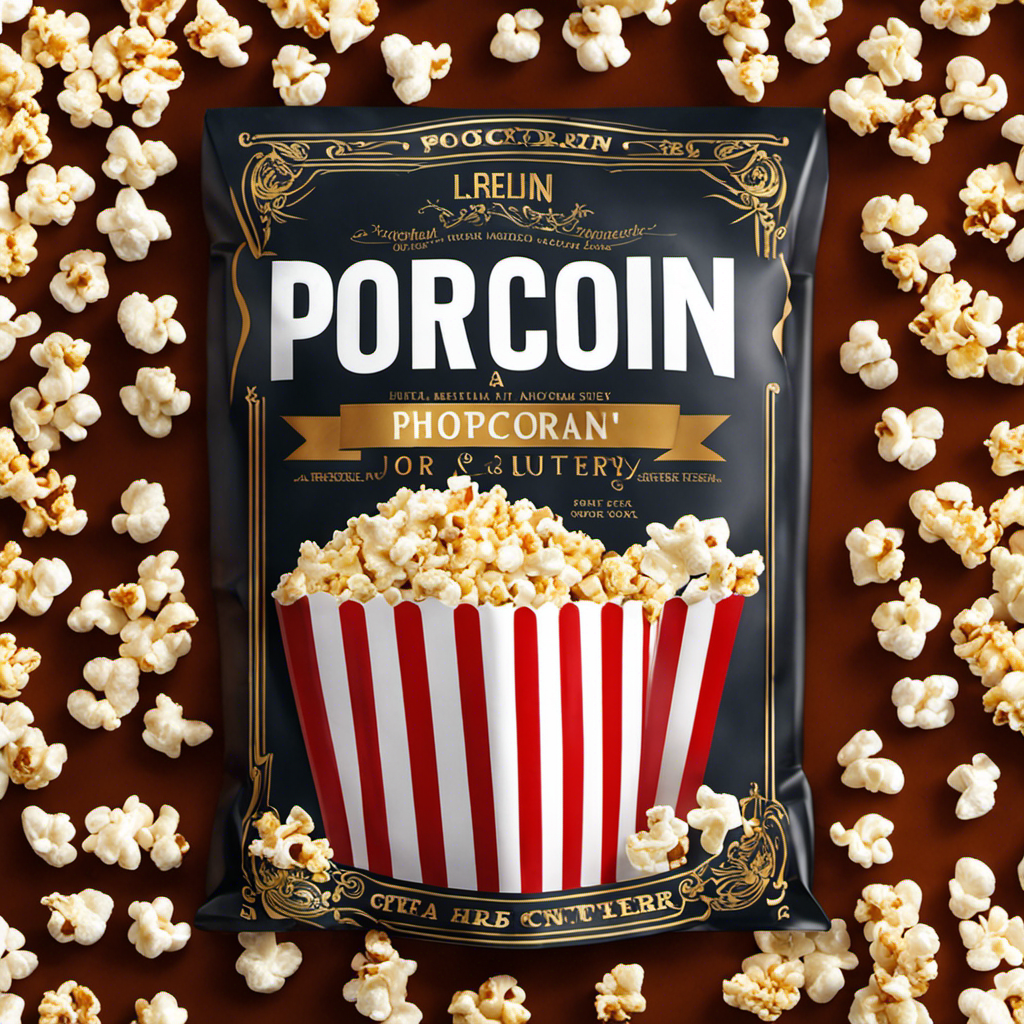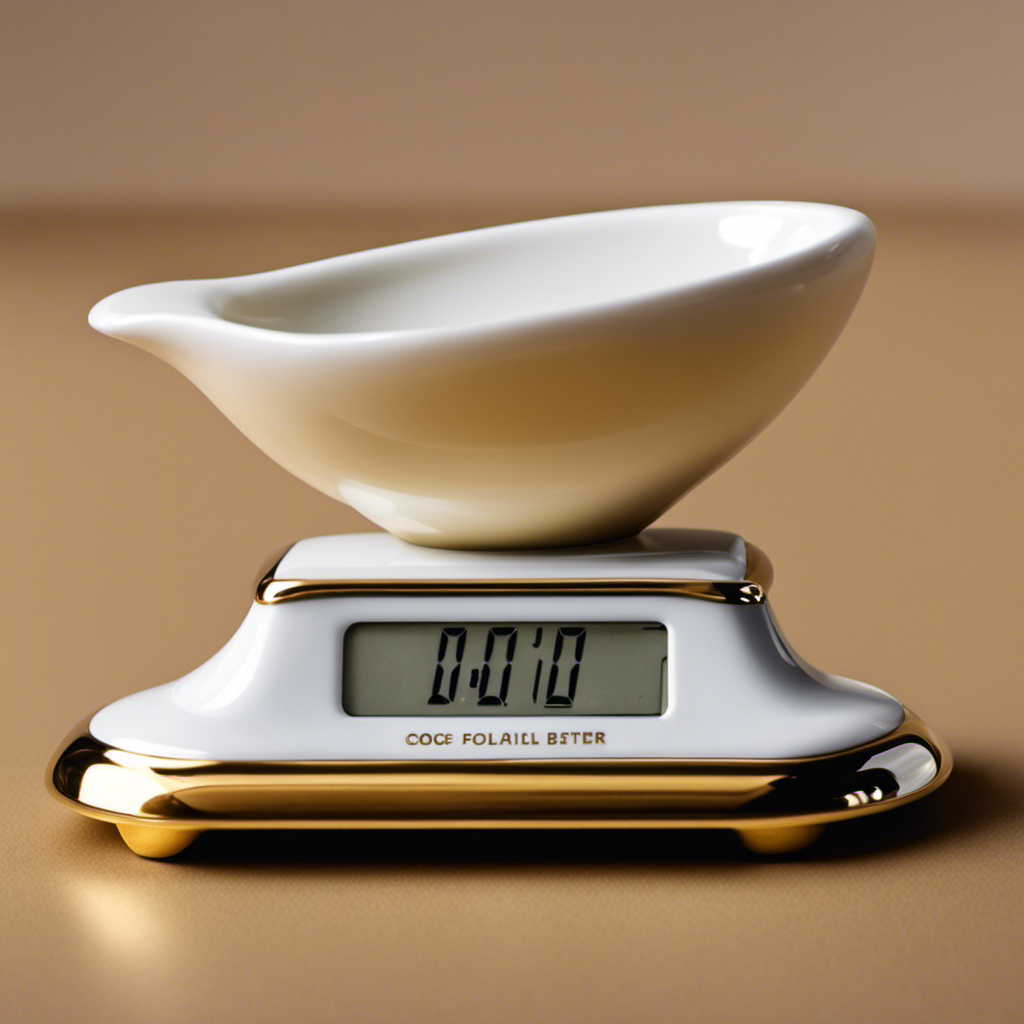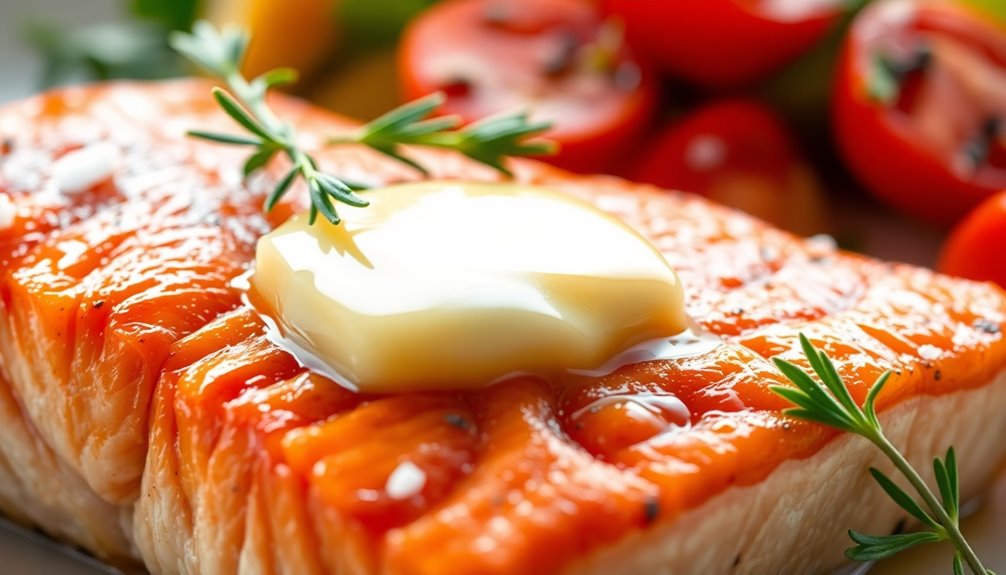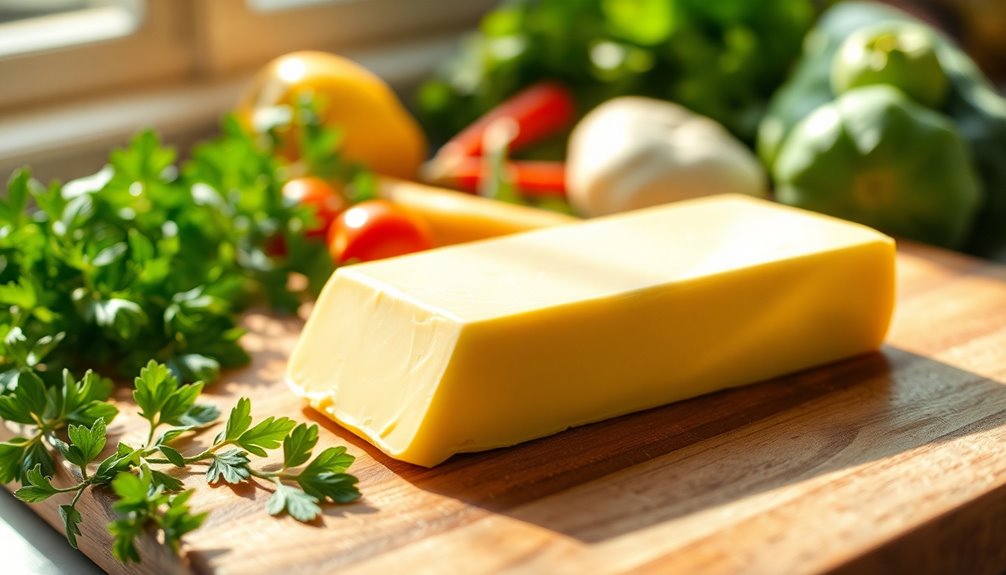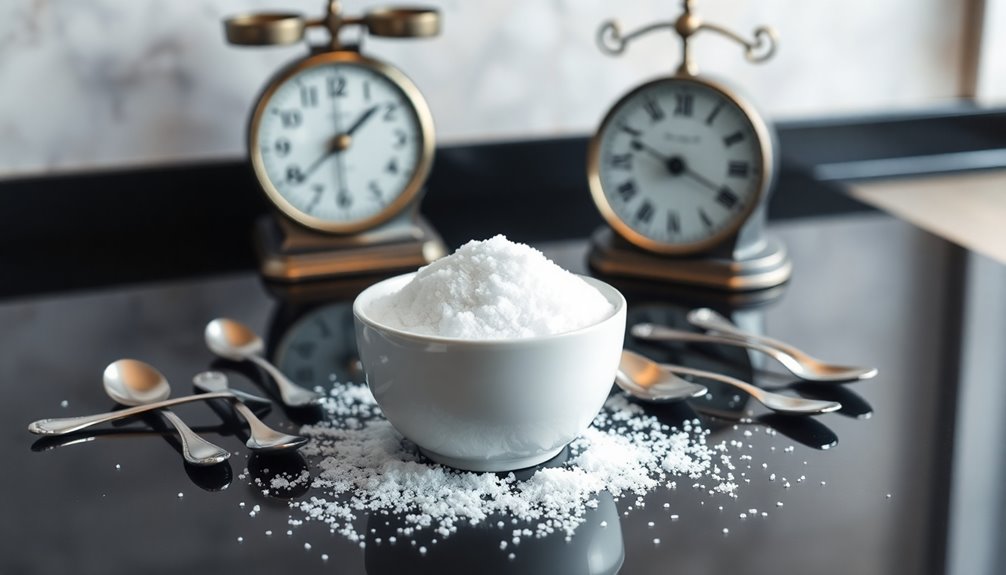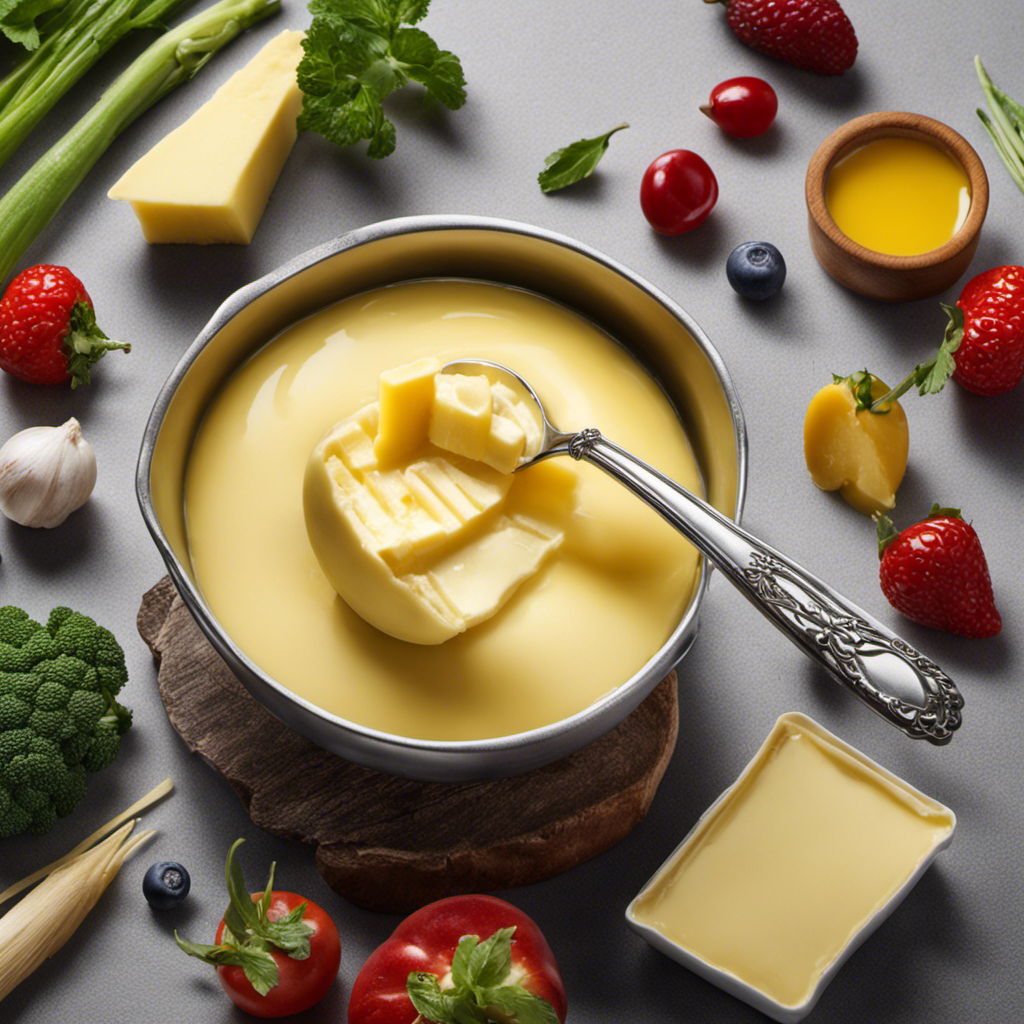As I clutch a bag of buttered popcorn, I can’t help but ponder how many calories are concealed within those golden kernels.
In this article, we will delve into the nutritional breakdown of popcorn and uncover the calorie count of its buttered variation. By understanding the serving size and the impact of butter, we can make informed choices when indulging in this beloved snack.
So, let’s compare the caloric content and explore practical tips for enjoying buttered popcorn without overindulging.
Key Takeaways
- Popcorn is a low-calorie snack, especially when air-popped without butter.
- Excessive butter consumption can lead to weight gain and increase the risk of heart disease due to its high saturated fat content.
- Understanding the serving size of popcorn is important for managing calorie intake and making healthier snack choices.
- Buttered popcorn has significantly more calories than plain popcorn, with a typical serving of buttered popcorn containing up to 300 calories or more.
Popcorn: A Nutritional Breakdown
Popcorn is a low-calorie snack that can be a healthy option when consumed in moderation. While many people enjoy buttered popcorn, there are also alternatives to consider when looking for a healthier option.
Air-popped popcorn, for example, contains fewer calories and fat than traditional buttered popcorn. It still provides that satisfying crunch and can be flavored with various seasonings to add more flavor without the extra calories. Some popular popcorn flavorings include nutritional yeast, which adds a cheesy taste, or cinnamon and sugar for a sweet and indulgent treat.
These alternatives allow you to enjoy the taste and texture of popcorn while keeping your calorie intake in check. Remember, moderation is key when it comes to any snack, including popcorn.
Buttered Popcorn: Calorie Count
To find out exactly how much buttered popcorn adds to your calorie count, you should check the packaging or a trusted source for nutritional information. However, it’s important to note that buttered popcorn can be quite calorie dense.
Here are a few reasons why excessive butter consumption can pose health risks:
-
Weight gain: Consuming high-calorie toppings like butter can contribute to weight gain, as excess calories are stored as fat.
-
High cholesterol: Butter is high in saturated fats, which can increase your cholesterol levels and raise the risk of heart disease.
-
Increased sodium intake: Most buttered popcorn is also seasoned with salt, which can lead to higher blood pressure and other health issues if consumed in excess.
-
Nutrient imbalance: Excessive butter consumption may displace other nutrient-rich foods from your diet, leading to nutrient deficiencies.
To maintain a healthy diet, it’s best to enjoy buttered popcorn in moderation and opt for healthier toppings whenever possible.
Understanding the Serving Size of Popcorn
Understanding the serving size of buttered popcorn is crucial for managing your calorie intake and making healthier snack choices. Many people underestimate the importance of serving sizes and end up consuming more calories than they realize.
When it comes to popcorn, serving size matters because it directly affects the nutritional value and calorie content. A typical serving size of buttered popcorn is about 1 ounce or 28 grams, which is equivalent to approximately 3 cups of popped popcorn. This serving size contains around 140-160 calories, depending on the brand and preparation method.
The Impact of Butter on Popcorn’s Calorie Content
When you add butter to your popcorn, it significantly increases the calorie content. While it may enhance the flavor, it’s important to consider the health implications of this indulgent addition.
Here are four reasons why you may want to think twice before drenching your popcorn in butter:
-
High in saturated fat: Butter is rich in saturated fat, which can raise cholesterol levels and increase the risk of heart disease.
-
Excess calories: Adding butter adds extra calories to your popcorn, which can contribute to weight gain if consumed in excess.
-
Limited nutritional value: Butter provides little nutritional value, offering mainly fat and calories without any significant vitamins or minerals.
-
Alternative options: There are healthier alternatives to butter, such as using olive oil or seasoning your popcorn with herbs and spices for added flavor without the extra calories and saturated fat.
Consider these factors when deciding whether to add butter to your popcorn. While it may taste delicious, it’s important to prioritize your health and make mindful choices.
Comparing Caloric Content: Buttered Popcorn Vs. Plain Popcorn
Comparing the caloric content, buttered popcorn has significantly more calories than plain popcorn. While plain popcorn is a low-calorie snack, buttered popcorn can quickly turn into a calorie bomb.
A typical serving of plain popcorn contains around 100 calories, while a serving of buttered popcorn can have up to 300 calories or more. The additional calories in buttered popcorn come from the added butter or oil used during the popping process.
It’s important to note that consuming excessive calories can lead to weight gain and other health issues. However, there are some benefits to buttered popcorn. The added butter or oil can make the popcorn more flavorful and enjoyable. Additionally, a small amount of fat is necessary for the body to absorb certain vitamins.
Overall, it’s best to enjoy buttered popcorn in moderation and opt for plain popcorn more often for its health benefits.
Tips for Enjoying Buttered Popcorn Without Overindulging
When it comes to enjoying buttered popcorn without overindulging, there are several strategies that can help.
First, practicing portion control is key. Instead of mindlessly munching on a large bag of popcorn, try measuring out a reasonable serving size and savoring each bite.
Additionally, exploring healthy popcorn alternatives, such as air-popped or lightly seasoned varieties, can provide a lower calorie option while still satisfying your craving.
Lastly, incorporating mindful eating techniques, such as paying attention to hunger and fullness cues, can help prevent overeating and promote a healthier relationship with food.
Portion Control Strategies
To control your portions effectively, try using smaller plates and bowls to trick your brain into thinking you’re eating more. This simple strategy can help you feel satisfied with smaller amounts of food.
Here are four additional portion control tips to help you practice mindful snacking:
- Slow down and savor each bite: Paying attention to the taste, texture, and aroma of your food can enhance satisfaction and prevent overeating.
- Measure your portions: Use measuring cups or a food scale to accurately portion out your snacks. This can prevent mindless eating and help you stay on track with your goals.
- Practice mindful eating: Be present and fully engaged with your food. Avoid distractions like television or scrolling through your phone while eating.
- Opt for nutrient-dense snacks: Choose snacks that are high in nutrients and low in calories, such as fruits, vegetables, and whole grains. These foods can help you feel full and satisfied without consuming excess calories.
Healthy Popcorn Alternatives
If you’re looking for a healthier alternative to traditional popcorn, try air-popped popcorn sprinkled with your favorite seasonings.
Air-popped popcorn is a great option because it is low in calories and fat, making it a guilt-free snack.
You can easily make it at home by using an air popper or even in the microwave using a microwave-safe bowl and a microwave-safe plate as a cover.
Once your popcorn is ready, you can get creative with your toppings. Instead of butter, try using low-calorie options like nutritional yeast, which adds a cheesy flavor without the added calories.
Other options include spices like chili powder, garlic powder, or even a sprinkle of cinnamon for a sweet twist.
These low-calorie popcorn toppings will not only add flavor but also keep your snack healthy and satisfying.
Mindful Eating Techniques
One way to practice mindful eating is by savoring each bite of your snack and fully enjoying the flavors and textures.
Here are four benefits of practicing mindful eating:
-
Increased satisfaction: By paying attention to the taste and texture of your food, you can fully enjoy each bite and feel more satisfied with smaller portions.
-
Improved digestion: Mindful eating allows you to slow down and chew your food thoroughly, aiding in better digestion and nutrient absorption.
-
Portion control: By being aware of your body’s hunger and fullness cues, you can better gauge when to stop eating, preventing overeating and promoting healthier portion sizes.
-
Heightened awareness: Mindful eating helps you become more conscious of your food choices and the impact they have on your overall well-being.
Frequently Asked Questions
Can I Eat Popcorn on a Diet?
Yes, you can eat popcorn on a diet. Air-popped popcorn is a healthier option than buttered popcorn. It can be included in a low carb diet as long as you watch your portion size and avoid excessive butter or oil.
Is Popcorn a Healthy Snack Option?
Popcorn is a healthy snack option. It’s a good source of fiber and has a low glycemic index, making it a satisfying choice. Plus, did you know that air-popped popcorn contains only 31 calories per cup?
How Many Calories Are in a Small Bag of Buttered Popcorn?
The calorie count in a small bag of buttered popcorn can vary depending on the portion size. It’s important to check the nutritional information on the packaging for an accurate estimate.
Can I Add My Own Butter to Plain Popcorn to Save on Calories?
Adding butter to plain popcorn can increase its calorie content. However, there are alternative toppings like herbs, spices, or nutritional yeast that can add flavor without adding as many calories.
Are There Any Health Benefits to Eating Popcorn?
Popcorn has health benefits like high fiber content and antioxidants. The way it’s cooked affects its nutritional value. Adding butter can increase calories, but plain popcorn is a healthier option.
Conclusion
In conclusion, enjoying a bag of buttered popcorn can be a delicious treat, but it’s important to be mindful of the calorie content. While plain popcorn is a low-calorie snack, adding butter can significantly increase the overall caloric intake.
It’s crucial to understand the serving size and portion control when indulging in buttered popcorn. Remember, moderation is key. As the saying goes, ‘A bag of buttered popcorn is like a double-edged sword – it can be a delightful experience, but too much can weigh you down.’
So, savor your buttered popcorn in moderation and enjoy it guilt-free!
